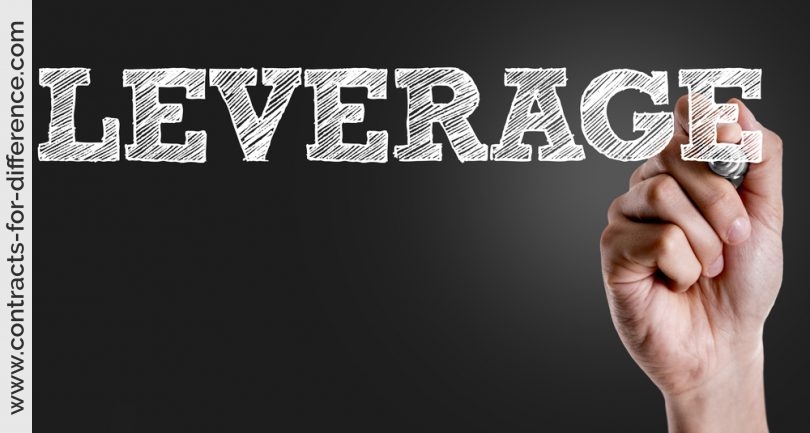- Make sure you have sufficient trading/investment capital. Use your own money, don’t borrow from friends/relatives or take a mortgage, there’s no need to go into debt so that you trade/invest. You need to have sufficient monies on deposit to be able to take advantage of any and all opportunities the market provides you.
- Formulate a trading system or strategy. Any good strategy should at a minimum break you even. If you aren’t clear whether you have a strategy, believe me, you don’t have one and you should not be attempting to trade. When you have a strategy, perhaps based on paper trading and backtesting, start trading real small.
- Appreciate that leverage can help produce substantial profits as easily as it can cause substantial losses. Always keep this in mind when you trade.
- If starting out strictly limit your gearing. By risking less at the beginning you stand to lose less while you get a feel for contracts for difference, which allows you to not only stay in the game longer but also gain valuable experience without losing most of your trading capital.
- Begin by trading in small sizes. Don’t get carried away by trading up to your margin limit it is usually better to trade small amounts over time, than risk losing one huge amount very quickly. I would advise that you start off by trading with sums that will mean nothing to you even in a worst case scenario. So if you are trading the FTSE index say, trade £1 per point. Even if the index plunges 10% in one go you’ll only be £500 out. If you are not trading full time and wish to leave positions unattended for any period, find out the largest historical move that occured over such a period. Trade a size for which such a move would be of no concern. Now you can FORGET THE MONEY and concentrate on CAPTURING POINTS. Make points your focus. If you can capture points consistently, you can always increase your trade size.
- Trading in sensible sizes will also allow you to place a stop sufficiently wide to avoid being triggered prematurely by the normal daily market noise, while still keeping the maximum loss to an acceptable level which in turns allows the trader more time to move into profit. It is good practice to work out the exposure of your trade size in advance of placing the trade. A simple strategy to calculate the position size is to work out how much you are willing to risk on a trade and calculate an acceptable position size based on this. For instance, if a CFD was priced at $2.65 and your stop level is set at $2.31 you risk amount would be $0.34 per CFD. To calculate your position size you would simply divide the loss you would be prepared to take by this risk amount. Assuming you are willing to risk $170 your position size would be 500 CFDs. This is referred to as the fractional position sizing in which a certain percentage of the overall account balance is risked on each trade. There are many other methods available for calculating appropriate position sizes. For instance, other possible ways of calculationi the position size would be to allocate a fixed dollar amount of equity to each trade, buy or sell a fixed number of shares CFDs of each trade or changing the size of each trade according to overall profitability.
- Your biggest enemy will be overleveraging. CFDs are highly leveraged financial products; some CFD providers may allow you to put down just $100 to get an exposure of up to $10,000! That’s 100-to-1 leverage and it could be the quickest way to wiping your account if you aren’t careful. You would have to be mental to use that kind of leverage without considering the risks; however the beauty of CFDs is that while the leverage is available, it doesn’t mean you have to use it to the limit. To avoid taking on too much risk through the misuse of leverage, it is important to develop a strategy for calculating the appropriate size of your trading positions.
- Do not use too much leverage; the gearing related to CFDs trading, comparitively small market movements can result in sizeable moves in your whole account balance. For instance, buying 5,000 CFDs priced at $2.70 on a margin of 10% requires a deposit of just $1,350. This means that with a deposit of just $1,350, you are able to hold a $13,500 CFD position. A one cent move is going to have an impact of $50 ($0.01 x 5,000 CFDs) on your profit/loss. So if the price increased by 11 cents a gain of $550 would have been made. This cuts both ways, however, and should the price move against you by the same extent a loss of $550 would have been made. If you only had $1,500 in your account balance, a loss of $550 would represent a significant impact on your overall performance as this loss would represent 36.7% of your account balance, on the other hand if you had $50,000 in your account the effect would be much less drastic ($550 loss would represent just 1.1% of your account balance).
- The amount of leverage you allow yourself to take should always mirror the amount of capital you have in your CFD account – and you should be targeting for about 3X leverage on your capital. For instance, if you have $15,000 in your account and hold up to $45,000 worth of trading positions, you have applied the 3X leverage rule to your capital. While the leverage that you have applied to a particular position may be quite higher than this, always keep in mind to check the bigger picture of your total leverage and keep it under control.
- Always keep in mind that leverage is a double-edged sword and while leverage (or gearing as it is sometimes called) can magnify gains it can also work against you if it is not managed correctly, often beginners are careless to this fact and this can lead to considerable losses.
- Minimise the capital you risk on each trade, ideally you should aim to risk no more than 2% of your capital on any one trade.
- Taking bigger positions than you should will overemphasize all the things I mentioned. And that will kill you fast. A good number of traders end up blow their first account. You want to make sure that your account lasts as long as possible, as that is the best trading course you’ll ever get, and try to get a full value out of it.







